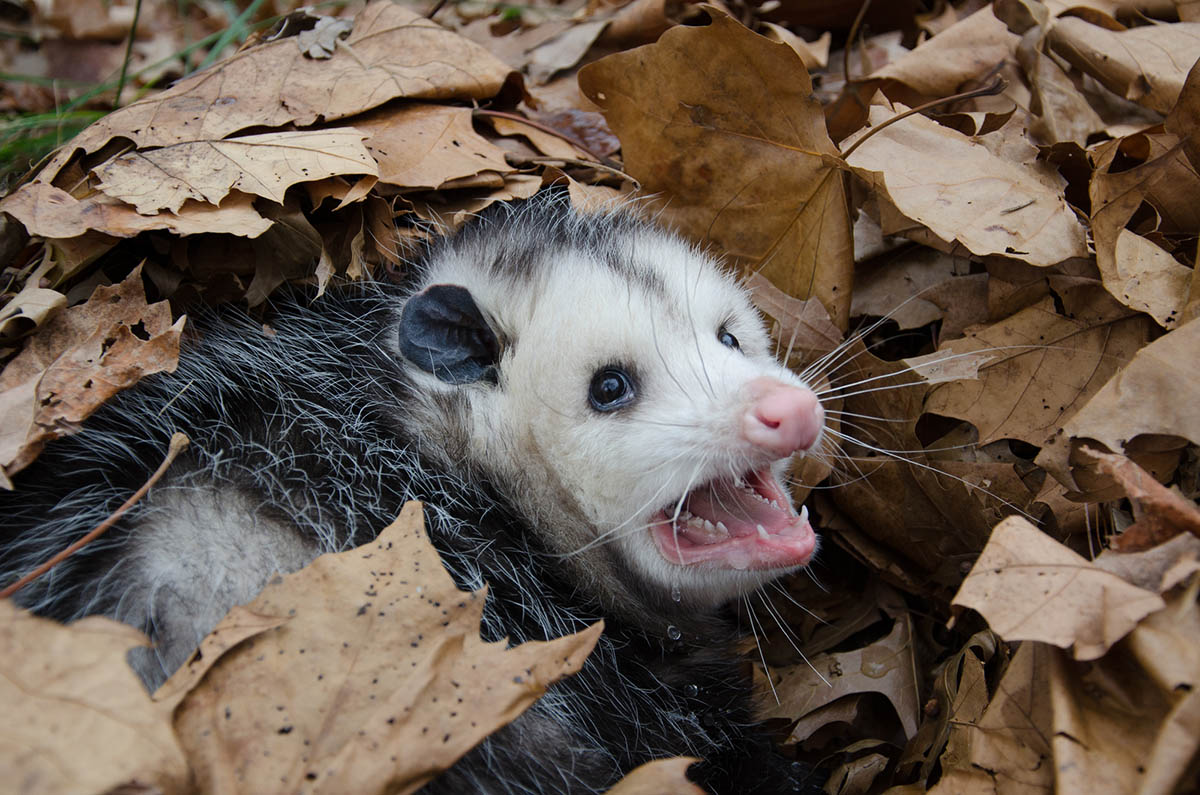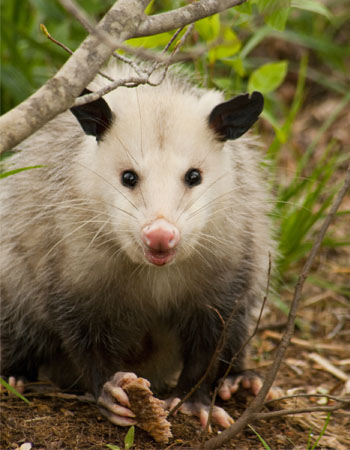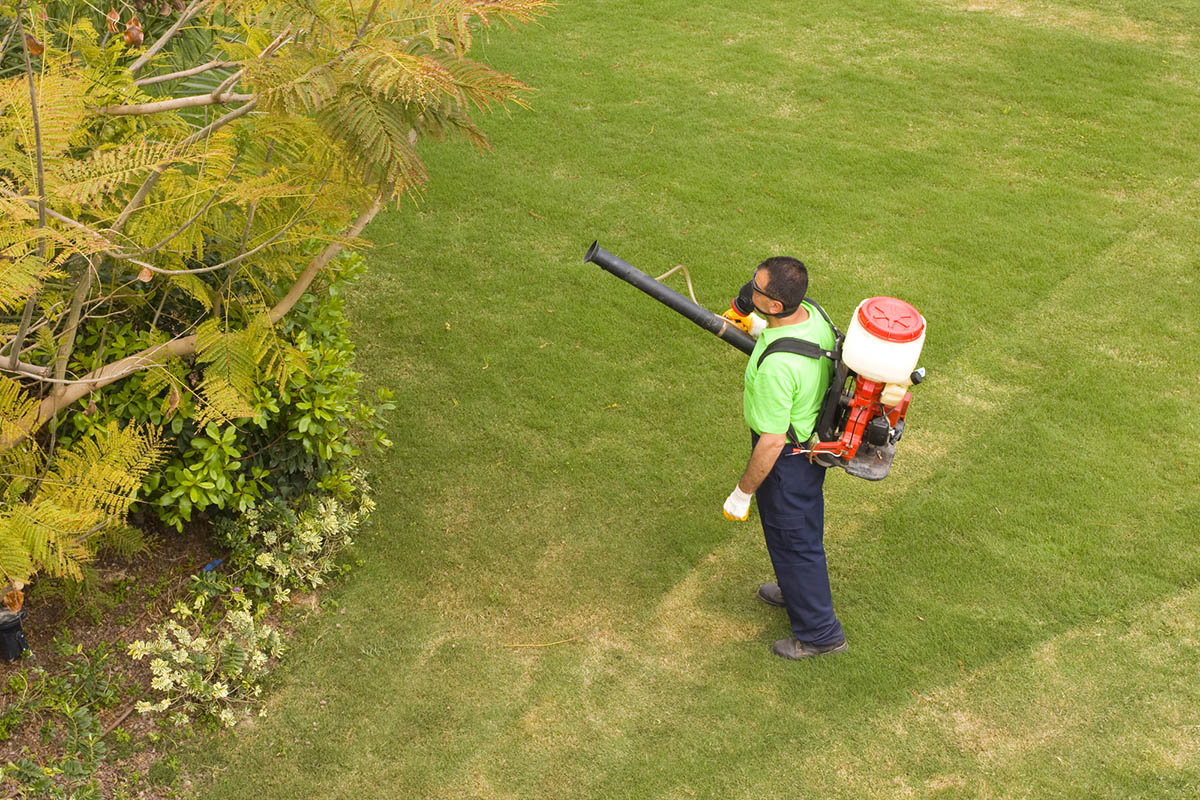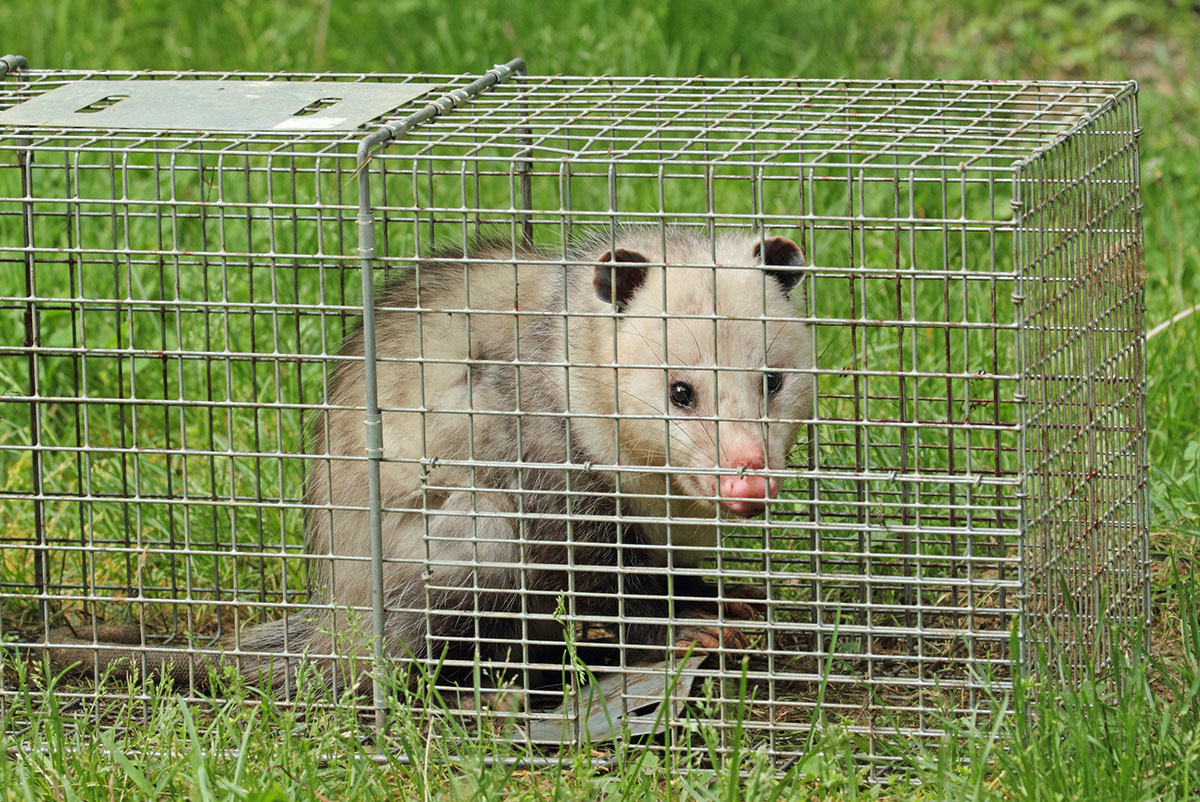

We may earn revenue from the products available on this page and participate in affiliate programs. Learn More ›
Possums and opossums, while both marsupials, are different animals. While opossums (with an “o”) are native to North America, the word is often shortened to possum, though these animals are not the same creature.
A common fear is, “Are opossums dangerous?” They’re pretty helpful creatures who clear out garbage and feed on insects. You may wonder, “So, why do I need to get rid of them?” These rat-like animals are often nuisances, especially when eating or trampling plants. Opossums can rummage through trash cans and steal pets’ food, too. It’s tricky to shoo them away to protect pets and plants, so keep reading to learn how to get rid of opossums.
Time required: A few days or weeks
Difficulty: Beginner
Estimated cost: $250 to $500
Tools & Materials
Bobvila.com may earn a commission from purchases made through these links.
- Pet doors that can be secured
- Pruning shears
- Electronic repellents (like a motion-activated sprinkler)
- Lawn lights
- Wind chimes
- Fencing
- Box, cage, or other live-catch trap
- Sealable trash bags
- Chemical repellents
- Chili powder
- Steel wire mesh
- Sheet metal
- Canned cat food or other trap bait (like jam or peanut butter on bread or overripe fruit)
Before You Begin…

Before you attempt to trap or remove an annoying opossum from your yard, the first step is proper identification. Many gray opossums are often confused with cats. To help you identify the right animal, most adult opossums are between 24 and 40 inches long with a 10- to 12-inch-long tail and weigh between 4 and 12 pounds. You can also identify opossums by their droppings. What does opossum poop look like? It’s about 1 to 2 inches in length, smooth on the sides, brown in color, and covered in white or yellowish mold growth.
Once you’ve made sure that you are dealing with an opossum, there are several ways to coax it out, including using a trap or hiring a pest management professional. Removing an opossum can be challenging, and the best way to control this population is through preventive measures.
Tips for Getting Rid of Possums
- While there are many chemical repellents available, they generally don’t have much impact on their own. Other opossum control methods are more successful, including motion-activated sprinklers or trapping cages.
- To help keep opossums away from a garden, many homeowners put up fences. Fencing should be at least 4 feet high.
- Make the yard less appealing by pruning trees and shrubs, removing brush piles and other debris, and cleaning up fallen tree fruit.
- Garbage cans should have tight-fitting lids; pet food should be put away at night.
- Close off or block entrances or openings around the house, including porches, decks, and buildings.
Safety Considerations
- Opossums can carry diseases including leptospirosis, tuberculosis, relapsing fever, tularemia, spotted fever, toxoplasmosis, coccidiosis, trichomoniasis, and Chagas disease. But before you start Googling, “can opossums have rabies,” they’re generally resistant to the disease.
- Opossums may carry ticks, mites, lice, and fleas.
- Killing these creatures should always be a last resort with the focus on humanely trapping them and releasing them back into the wild. One of the best pest control companies with wildlife removal services, such as Orkin or Terminix, may be of service depending on your area.

STEP 1: Remove possum attractants such as food and water and potential homes.
Getting rid of or sealing food materials, water sources, and potential opossum homes effectively prevents these critters from sticking around. If pet food or trash are outside overnight, it’s an open invitation for a feast. If fruit-bearing plants are on your property, ensure crops aren’t left on the ground. Use sealable trash bags when removing these items to keep opossums from rooting through the trash can.
Where do opossums live? They prefer forested or bushy homes and will use leftover and destroyed settings as a house, so the yard will be less hospitable if there are no brush piles, dilapidated buildings, or holes under concrete slabs.
STEP 2: Secure outside entry points to your home; block access to chimneys, vents, or any other holes or gaps.
Open holes provide easy access. Once opossums are inside homes, barns, or chicken coops, that’s where most damage occurs. To limit access, trim branches, close entrances, and fix broken vents or foundation cracks. Opossums occasionally enter homes through pet doors, so those doors should be sealed, too. Since opossums are expert climbers, they can easily climb a tree onto a long branch and jump to land on the roof near a chimney. Trimming tree branches makes them harder to climb.

STEP 3: Apply a chemical repellent to your garden.
Chemical repellents from your local home improvement or hardware store can be applied to gardens, flower beds, and structure bases to discourage opossums. While repellents vary by brand and type, most are powder and include predator urine. They have a powerful odor and are relatively expensive to purchase. They typically offer little relief unless applied frequently and in high concentrations and are best used in conjunction with other methods. Chili powder can also be used in a pinch, although it needs to be reapplied frequently.
STEP 3: Use electronic repellents to scare possums away.
Electronic repellents, like motion-activated sprinklers, can startle opossums and scare them away. These repellents are eco-friendly and deliver more consistent results. They can be used on lawns, chicken coops, entryways, pools, barns, compost bins, trees, and other areas around the yard. Lawn lights and wind chimes can also help make a backyard a less welcoming place.
STEP 4: Install special fencing.
While opossums are skilled climbers, a wire or electric fence can keep them away from a garden. To deter these critters, fencing should be at least 4 feet high, with the top foot facing outward to create an overhang. You can add an electric fence, too, set at an outward angle, approximately 3 to 4 inches over the top. Any other area, including underneath porches, stairways, and crawl spaces should be blocked off. Cover these openings with steel wire mesh or sheet metal.

STEP 5: Trap possums using a cage and bait.
If an opossum has found its way into the home, a live trap can lure the critter out. With these nocturnal animals, it’s helpful to set up the trap at night and bait them. What do opossums eat? A study in The Journal of Wildlife Management showed the stomach contents of wild opossums varied, but they generally prefer fruit, grain, or insects. Food items like jam or peanut butter on bread or overripe fruit will appeal to them. The trap should be set up along common travel routes in the house, so it’ll be unlikely for the critter to miss the bait. It’s best to use a trap in the late fall or early winter before the breeding season begins.
STEP 6: Install a nesting box in nearby trees to provide possums with an alternative home.
While a house or backyard isn’t an ideal home for opossums, you can create or purchase a nesting box to give these creatures their own space if they keep showing up around the yard. Opossums like tight, secure spaces with small entrances that can protect them from larger predators. For instance, an old dog carrier crate without its front door works nicely, as do homemade shelters made from old coolers or plastic tubs. A nesting box is an easy way to make space for wildlife in a yard that doesn’t disrupt or damage the home.
Opossums can be a nuisance around the house and, if they get inside, can cause severe damage. While getting rid of them can be tricky, it’s easier to take preventive measures to opossum-proof your yard. If you haven’t had success with these remedies or feel anxious about it, you can hire a pest management professional. The service technician will remove the animal and develop a customized plan to keep future pests away.
